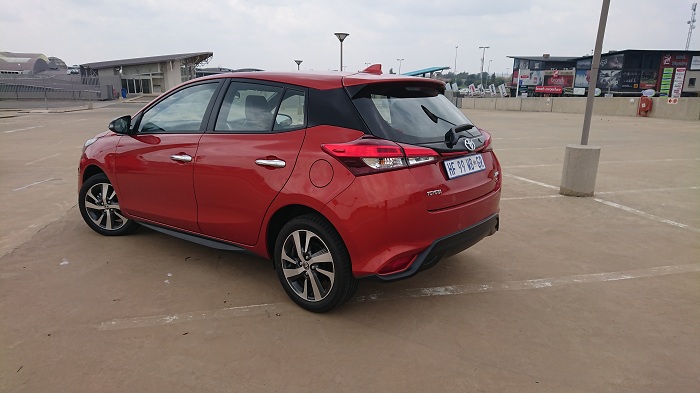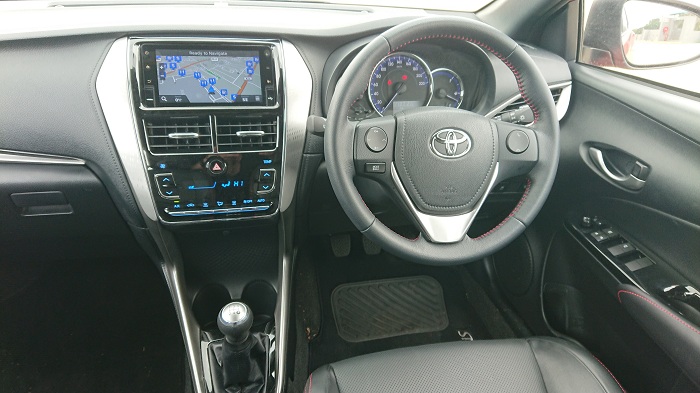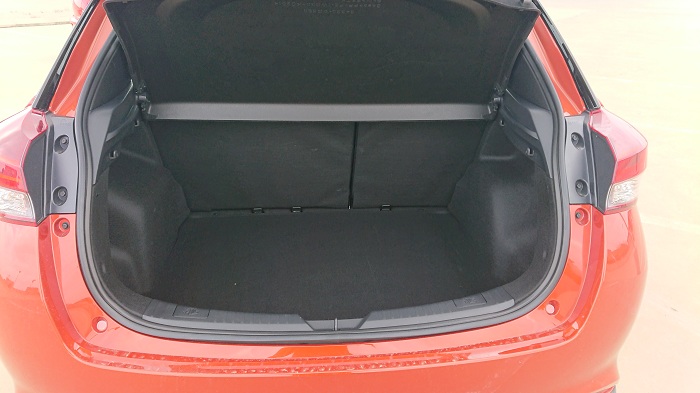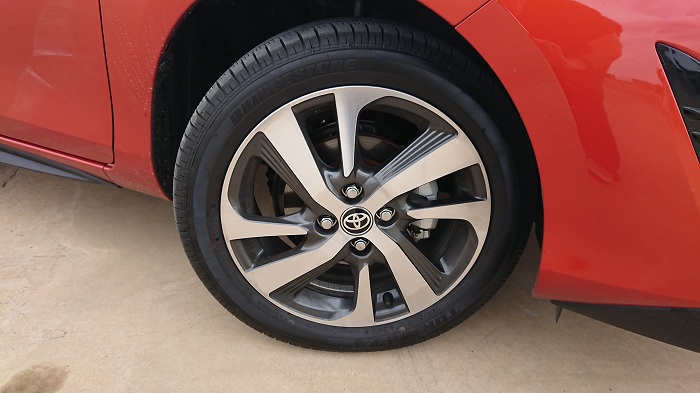Months before this, Toyota had unveiled an updated version of the Yaris known as the Pulse, equipped with a more powerful 1.5-litre petrol engine and a host of features it had hoped would have lured buyers away from the Volkswagen Polo, Renault Clio, Ford Fiesta, Kia Rio, Hyundai i20 and Mazda2.
Although speculation and head-scratching at the move will continue, it would fair to say that the new Yaris certainly rates as one of the most polarising Toyota seen on local shores for quite some time, especially when compared to its rather conservative predecessor.
Dividing looks
Viewed on first glance, the new Yaris not only gains in nearly every dimension versus the old model but adopts a more striking appearance with elongated headlights, a pronounced shoulder line, gloss black finish on the C-pillar, attractive taillights and generous use of more gloss black element around the rear window.
Adding to this was the fact that our Crimson Metallic test model was the flagship S model, which boasted black door mirrors, a deep front intake with a black honeycomb grille, bumper and door sills extensions, a black faux rear diffuser, red striping on the tailgate below and sporty looking 16-inch alloy wheels which seemingly appears lost within the expansive wheel arches.
While certainly a massive step-up from the previous Yaris in boasting a more youthful design, it will be frown upon from existing buyers, and as colleague Justin Jacobs mentioned in his launch review, signalled out for not resembling any of Toyota's current passenger car sold locally.
Interior varies in success
Step inside, and you are greeted by an interior that is vastly different from the Yaris South Africans have become used to, with a less swoopy design in favour of a more traditional layout, highlighted by a portrait styled facia housing the new touchscreen infotainment display and HVAC switches.
Despite the S' racy red stitching on the leather seats, steering wheel, dashboard and door cards, the assortment of plastics used range from acceptable to cheap feeling in the case of the faux aluminium inserts on the centre console, with a further gripe being the cut-price materials down the transmission tunnel.
Spacious and well equipped
Where the Yaris regains some ground in the space department, with the longer wheelbase providing good levels of head and legroom at the front, and rather impressive rear passenger legroom with headroom likely to be a tad uncomfortable for taller passengers. Boot space is rated at a rather capacious 310-litres.
The switch from Japanese to Thai production has also translated to standard items being fitted, with the aforementioned infotainment system incorporating both Bluetooth, Apple CarPlay, Android Auto, satellite navigation, a USB port and HDMI jack
Down the centre console, the digital climate control panel with its tiny buttons looks good and is easy to use, while electric windows all around, auto lock/unlock doors, folding electric mirrors, height-adjustable leather steering wheel, seven airbags, ABS with EBD, Brake Assist and traction control completes the line-up.
Missing from the list though is cruise control, while audiophiles will be less than impressed with the quality of the six-speaker sound system, which rates as disappointing for a vehicle aimed at a younger, tech-savvy audience.
Drivetrain a missed improvement opportunity
An area where the Yaris undoubtedly falls flat is the drivetrain. Though still displacing 1.5-litres, the engine now produces 79kW as opposed to 82kW, while torque strangely increases from 136Nm to 140Nm. Unlike the Pulse, the manual gearbox loses out on a sixth ratio leaving only five.
Combined with its heavier mass and altitude sapping power up here at the Reef, the engine has to be worked hard to keep the momentum going, which results in a gruff tone and too much road noise at the national limit.
Adding to this, the five-speed ‘box is not the slickest option out there and despite a light clutch action, the actual bite point is set up too high and requires perfect throttle balancing to avoid stalling or if you are not keen on relying on the Hill Start Assist system too much.
Decent ride, lifeless steering
One of the biggest oversights though is the steering, which apart from being an electric setup, was found to be heavy for a B-segment hatch and devoid of any feel or feedback. Ride quality fared fractionally better, but become unsettling when faced with badly patched and sudden surface changes.
Conclusion
Judging by the March NAAMSA sales figure, the Yaris' opinion-splitting looks and level of standard kit has worked in its favour with 664 units finding new homes, a fair chunk more than the Fiesta (447), Clio (422) and Rio (355), but well behind the Polo (2 121).
At R288 700 though, the S is rather pricey and lacking in the drivetrain department when compared to its turbocharged rivals. If you have your mind deadest on a Yaris however and can do without the styling tweaks, two added speakers, fog lamps leather and climate control, opt for Xs priced at R255 800.




















